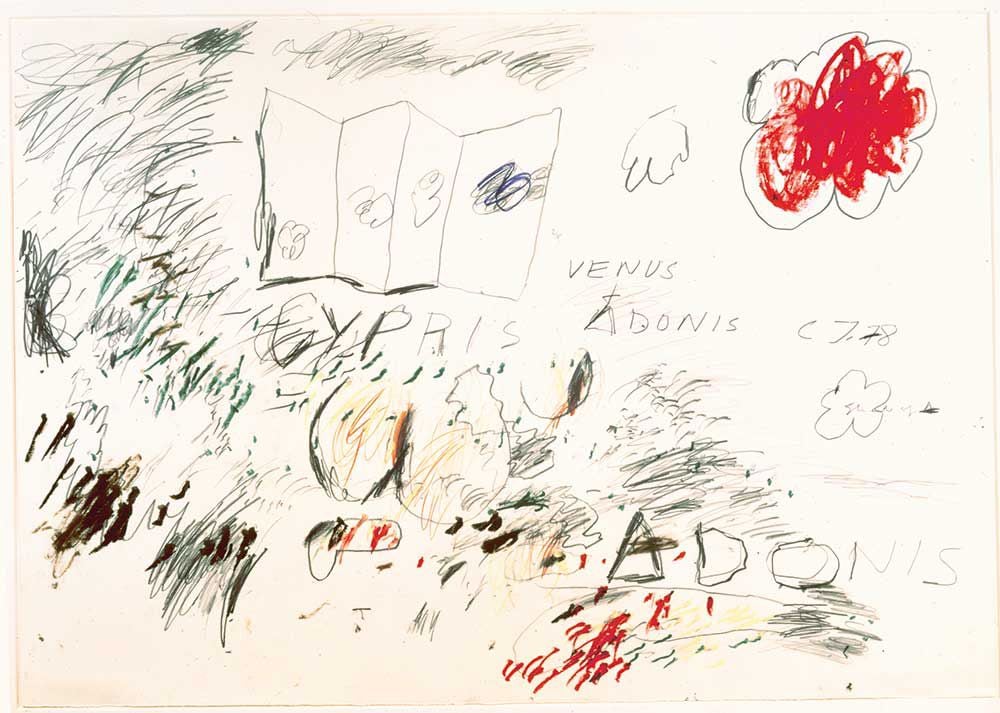Artaud, Antonin.
The Theatre and Its Double: Essays. London,: Calder & Boyars, 1970.
Carl Bergstrom and Jevin West,
Case Study: Criminal machine learning, 2017.
Brook, Peter.
The Empty Space. [1st American ed. New York,: Atheneum, 1968.
Brook, Peter.
The Open Door : Thoughts on Acting and Theatre. 1st Anchor Books ed. New York: Anchor Books, 2005.
Burnett
Masters of All They Surveyed "Terra Incognita" and "Marks on the Land"
Calude, Cristian S., and Giuseppe Longo. "
The Deluge of Spurious Correlations in Big Data." Foundations of Science 22.3 (2017) 595–612.
Debord, Guy.
The Society of the Spectacle. La société du spectacle 1967. New York: Zone Books, 1994.
Deleuze, Gilles, and Felix Guattari.
A Thousand Plateaus : Capitalism and Schizophrenia. tr. Brian Massumi. Minneapolis: University of Minnesota Press, 1987(1980).
Derrida, Jacques.
Writing and Difference. Chicago: University of Chicago Press, 1978.
Grotowski, Jerzy, and Eugenio Barba.
Towards a Poor Theatre. 1st Routledge ed. New York: Routledge, 2002.
Heidegger, Martin.
Poetry, Language, Thought. HarperCollins Canada / Harper Trade, 2001.
Henrich, Joseph, Steven Heine, Ara Norenzayan, "
The Weirdest People in the World," 2009.
Heraclitus, and Charles H. Kahn.
The Art and Thought of Heraclitus: An Edition of the Fragments with Translation and Commentary. Cambridge, [Eng.] ; New York: Cambridge University Press, 1979.
James, William.
Essays on Radical Empiricism. York: Longman Green and Co, 1912.
Jänich, Klaus.
Topology. Berlin: Springer-Verlag, 1980, 1984.
Latour, Bruno. “Drawing Things Together”
Lefebvre, Henri.
Rhythmanalysis : Space, Time, and Everyday Life. London, New York: Continuum, 2004.
Magnusson, Thor. “
Of Epistemic Tools: musical instruments as cognitive extensions,” Organised Sound, 14 (2009), 168-176.
Marker, Chris. San Soleil (film).
Maturana, Humberto R., and Francisco J. Varela.
Autopoiesis and Cognition: The Realization of the Living. Boston Studies in the Philosophy of Science. Vol. 42. Dordrecht, Holland, Boston: D. Reidel Pub. Co., 1980.
Merleau-Ponty, Maurice, and Donald A. Landes.
Phenomenology of Perception. Abingdon, Oxon ; New York: Routledge, 2011.
Introduction & ToC,
Excerpts re. the Body.
O’Gorman, Marcel,
NecromediaPetitot, Jean. "Morphological Eidetics for Phenomenology of Perception."
Naturalizing Phenomenology: Issues in Contemporary Phenomenology and Cognitive Science. Ed. J. Petitot, F. J. Varela, J.-M. Roy, B. Pachoud. Stanford: Stanford University Press, 1999. 330-71.
Pye, D.
The Nature and Art of Workmanship. Cambridge UP, 1968,
17-29.Prigogine, I., and Isabelle Stengers.
Order out of Chaos : Man's New Dialogue with Nature. Toronto ; New York, N.Y.: Bantam Books, 1984.
Sennett, R.
The Craftsman. Yale University Press, 2008,
Chapter 1.
Sha, Xin Wei.
Poiesis, Enchantment, and Topological Matter. MIT Press, 2013.
Sha X. W., "
Topology and Morphogenesis," Theory, Culture & Society 29 (4-5), 2013.
Sicart, Miguel. "Against Procedurality."
Game Studies 11.3 (2011).
Stengers, Isabelle. "Beyond Conversation: The Risks of Peace."
Process and Difference: Between Cosmological and Poststructuralist Postmodernisms. Eds. Keller, Catherine and Anne Daniell. New York: SUNY, 2002. 235-55.
Whitehead, Alfred North.
Process and Reality: An Essay in Cosmology. Eds. Griffin, David Ray and Donald W. Sherburne. Corrected ed. New York: The Free Press, 1978.
Wittgenstein, Ludwig, and G. E. M. Anscombe.
Philosophical Investigations : The German Text, with a Revised English Translation. 3rd ed. Malden, MA,: Blackwell Pub., 2003.
Xiaolin Wu, and Xi Zhang, "
Automated Inference on Criminality using Face Images," 2016.
With responses to critiques. (2017)




